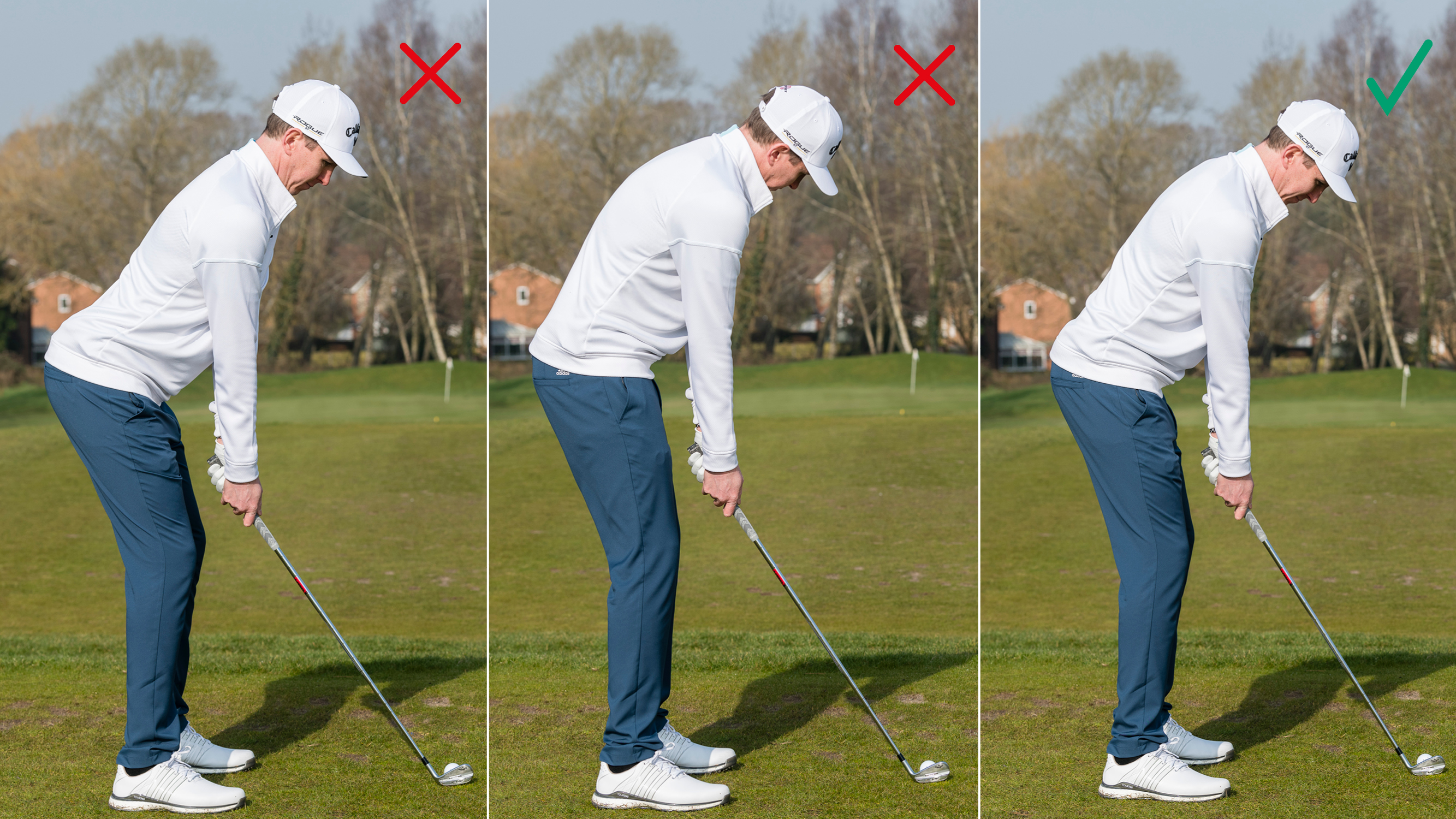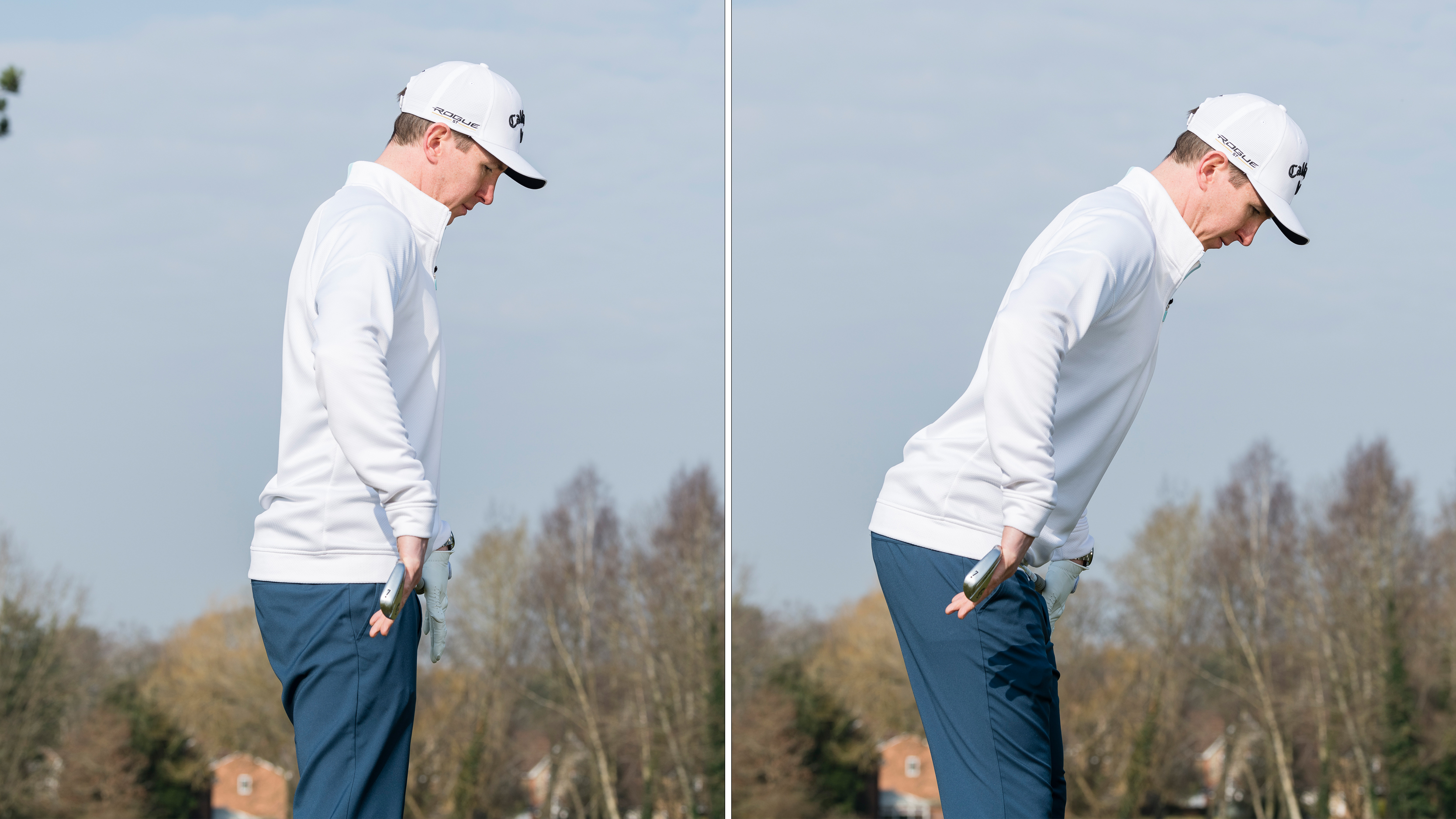How To Fix Your Golf Swing Posture
PGA pro Ben Emerson gives his tips on how to fix your golf swing posture


If you have a poor and inefficient golf swing posture, the chances are you’re going to have to make compensations during the swing that result in inconsistency. In the video and article below, PGA pro Ben Emerson discusses the common faults and shares his tips on how you can improve in this area…
So, what we’re looking for here is to find a neutral posture. One of the things tour players do that you don't is to have a really flat back, as well as a nice hip hinge - this is what we call a neutral posture.
Alternatively, what we see with higher handicappers is that they don't know how to set their spine angle and fall into two types of posture categories. The first one is known as ‘C’ posture, which is quite a lazy position where the shoulders drop down, the head tucks in and the top of the back rounds out to form this curved shape.
The other one is the ‘S’ posture, where the shoulders look like they are being squeezed together to form an inward arc in the back, which causes problems. While not insurmountable, both of these can lead to a lack of consistency in strike in particular. If you fall into one of these categories, it's probably one of the reasons you aren't improving at golf.

The 'C' shape (left) and the 'S' shape (right) are common posture faults among amateurs
As well as knowing how wide your golf stance should be, understanding what these postures feel like will help you to find a middle ground of neutrality that will likely lead to better golf.
To do this, take a club and hold it across your shoulders as Ben demonstrates in the video above. When you’ve done that, go into the ‘S’ shape posture, hinging your hips and really pushing your shoulders back to get a sense of exactly how it feels to put your body into this position. Without removing the club, go from there into the ‘C’ shape, so round out the back, drop the shoulders and tuck the head into your neck a little.
Do that a few times to start to hone these feelings before working on finding the middle ground between them. With your senses more heightened, you should be able to achieve a neutral golf swing posture without much hassle. With a flatter back, you’ll quickly notice how much easier it is to rotate around your body throughout the swing.
Subscribe to the Golf Monthly newsletter to stay up to date with all the latest tour news, equipment news, reviews, head-to-heads and buyer’s guides from our team of experienced experts.

Try this drill, as demonstrated by Ben here and in the video above, if you're struggling to find a neutral golf posture
However, if you’re still struggling, there is another great golf drill for you. Again, take your club but this time put it just below your belt line while standing nice and tall. With your hands at either end, feel like you push the club back into your hips, which should push your bum out while keeping the back straight.
From there, all you need to do is introduce a little knee flex and let the arms hang naturally down, and you’ll be in a great position from which to swing consistently and play better golf.

Location: Sand Martins GC
Ben’s modern approach to golf coaching has seen him become one of the most sought-after coaches in the country and teaches none other than Robbie Williams. His honest, modern and fun style of coaching has help thousands of golfers of all ages and abilities and he has been coaching for over 20 years.
Advice for practice:
Start with slow, small swings. If you can’t do it small and slowly there is not a hope in hell of doing it at full speed with a full swing! In other sports such as rugby or martial arts they slow learn new moves/plays before making them at full speed.
Teaching philosophy:
‘Why guess when you can access’ Ever new student goes through a full TPI movement screen, 3D motion capture and pressure plate analysis as well as TrackMan and 2D video analysis. Coaching is based on facts and not guess work.
Most common problem:
A lack of clubface understanding and awareness. I get golfers to aim the clubface directly at the target and get them to make a slow swings and deliver the club to the ball with an open face, then repeat the same thing again but with a closed face, followed by one at the target. Giving them full awareness based on feelings errors to find a happy middle ground.
-
 Scottie Scheffler Wins Fourth Consecutive PGA Tour Player Of The Year Award
Scottie Scheffler Wins Fourth Consecutive PGA Tour Player Of The Year AwardThe World No.1, who won two Majors in 2025, has claimed the award, with Aldrich Potgieter named the PGA Tour Rookie of the Year
-
 Cadillac Becomes Title Sponsor Of New Trump National Doral PGA Tour Signature Event
Cadillac Becomes Title Sponsor Of New Trump National Doral PGA Tour Signature EventThe luxury vehicle manufacturer is returning as the title sponsor of a PGA Tour event for the first time in 10 years